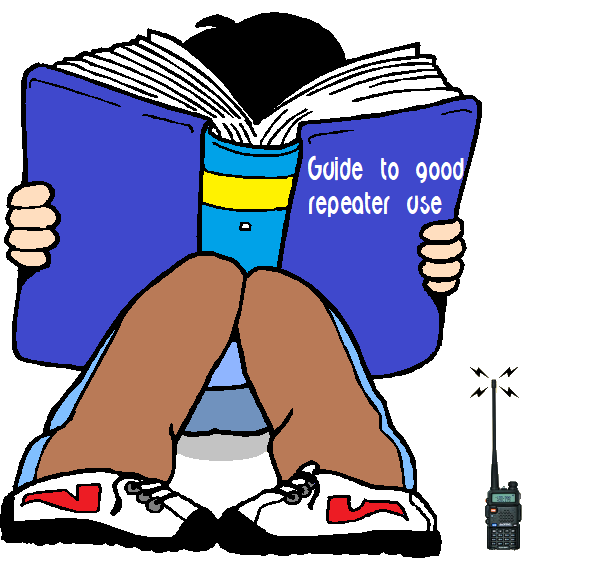
Repeater user GUIDELINES.
Below are generally considered appropriate methods to use when on any repeater.
Take the time to listen to a repeater before you talk.
You don’t want to be talking over someone.
Things to remember when you start using a repeater…
Speak like you were talking to someone face to face.
Key the mike, and then start to talk.
Don’t start speaking as you key the mic.
Because… repeaters have a short delay before transmitting. If you start speaking too soon, your first few words may not be heard.
Make sure you have finished talking before you un-key the mic.
Give your call sign clearly, and slowly.
Use plain english and avoid jargon as much as possible.
Because… Q-codes are a morse code short hand. They are sometimes used on ssb in hf contesting and on field day, but should not be used on repeaters. Common examples are: qsl, qsy, qrt, xyl. Also, giving your call then saying your “on the side” this is not cb.
Avoid phonetics unless asked to do so.
When using… phonetics, use standard phonetics. “alpha,bravo, charlie”… Etc. Phonetics are commonly used when checking into nets.
If you are listening and would like to have conversation, give your callsign and add “listening on the side”.
Don’t… use the term “cq” on a repeater is generally discouraged.
When you wish to communicate on a repeater, listen for a while before talking.
Because… there may be a conversation in progress.
If you want to join a conversation… just give your call between transmissions.
Rather than… using the term “break break”.
You should be acknowledged and allowed into the conversation.
If you want to talk to a certain person… call them using their call sign twice, then your call sign.
If they don’t answer clear the repeater or say your callsign “listening on the side”.
In an emergency… give your call and say “emergency”
Rather than… using “break break”. Saying “emergency” will make it clear why you are interrupting and it will also get more attention from those just listening.
Make sure you state your call sign according to the rules.
But avoid… over using your callsign. Sate the type of emergency and what help is needed. Be brief you will get help sooner that way. Long explanations can confuse those try to help.
Leaving the repeater… When you are ready to clear the repeater, just give your callsign and say your clear.
You do… not have to give the the other persons callsign, they are responsible for doing that, not you.
Never “ker-chunk” a repeater.
That means… keying up your radio for just a moment so that the repeater transmits, usually you hear the “courtesy beep” afterwards. This is also annoying to the repeater owners and control operators. If you want to make sure you are transmitting okay, just give your call sign, and ask for a radio check if one is needed or give your callsign and say that your testing.
Have fun. These are just a few pointers to help you sound like an old pro. Just because others violate these guidelines don’t make it right. Be the example others will follow.
Don’t forget to thank the repeater owner/trustees for the use of the repeater as they spend a longtime behind the scenes on installing, repair and maintenance, to keep the repeater going for your use.